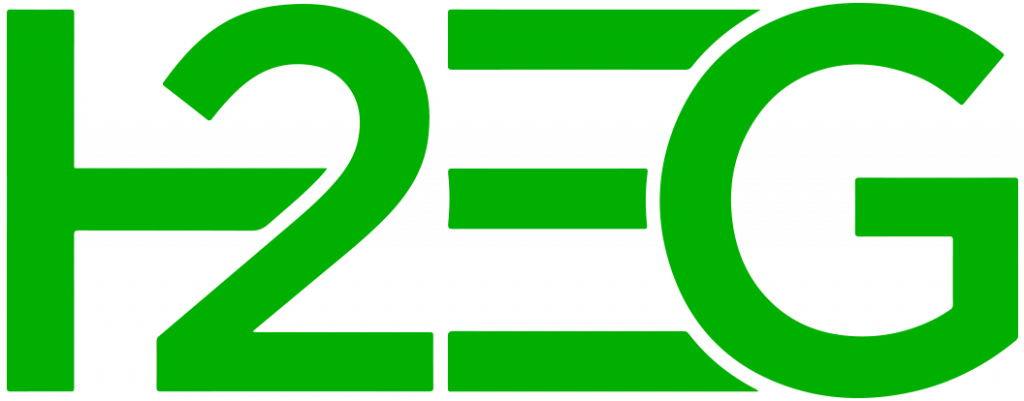HyPoint recently shared the first glimpse of what its hydrogen-powered helicopter could look like and earlier in 2021, the company unveiled its revolutionary hydrogen technology for the aviation and urban air mobility sectors. As Chief Engineer, it must be exciting to be involved in these projects! Can you tell us about your role at HyPoint and in these projects?
Yes, it’s been an exciting year at Hypoint! We’ve made a lot of progress in developing our fuel cell technology for use in the aviation market. I’m responsible for the development of our high-temperature membrane electrode assembly (MEA), which you can think of as the “heart” of the fuel cell system that we are designing.
As the leader of our MEA development, I coordinate activities with our MEA partner, BASF, and work with our R&D department to identify the next breakthrough technologies that will further improve the MEA performance. You can read more about our recently-announced partnership with BASF and our joint plan to develop the next-generation osystem — which will exceed 3,000 W/kg of specific energy and meet the needs of narrow-body aircraft — on H2 View.
I am also one of HyPoint’s co-founders, so I have additional responsibilities including investor meetings, and input on business decisions.
What sparked your interest in engineering? When was the moment you realised this was the career you wanted to pursue?
When I was a teenager, my uncle, an engineer and inventor, would bring me with him to work to show me what he was working on and the things he’d invented. He invented some really cool things in his career, including automated machines and other devices that helped people.
One of his projects was for a company working on a wearable patch that could dispense medication. He was a problem-solver who was always excited about what he was working on. That excitement and the desire to improve people’s lives is what inspired me to become an engineer.
Later, when I had my own career, I remember we’d “talk shop” about the projects we were working on and everybody else would leave the room — something I imagine many readers can relate to!
And how did you get into working in hydrogen? Can you tell us that story?
My career as an engineer started at Xerox Corporation where I was fortunate to participate in a product development programme that had a sustainability goal called “Zero-to-Landfill”. This “reduce, reuse, recycle” programme was incredibly successful at reducing waste throughout the printer manufacturing process.
It opened my eyes and provided life-changing professional and personal growth because it changed how I viewed my role and my responsibility to the environment. In short, I realised I needed to be a steward and not just an inhabitant of the planet — that being both an engineer who can create new things and also a good steward to the environment is incredibly powerful and rewarding.
Around the same time, my mentor and several of my co-workers left to join a small start-up fuel cell company called Plug Power. At the time, I didn’t know much about hydrogen fuel cells, but this young hydrogen start-up sounded like it could offer a challenging, thriving and rewarding environment — and its focus on sustainability appealed to me. We would always joke that the world just didn’t need another copier, but fuel cells – that could really create an impact. As a sidenote, I’m also a Mom who often thinks about how we will leave the planet better for our children and generations to come.
Fast forward and Plug Power has become a global leader in hydrogen fuel cell technology and I imagine a very familiar name to your readers. I ended up working at Plug Power for nearly 15 years, primarily with the high-temperature membrane technologies, which is what led me to oversee this development at HyPoint.
What are some of the biggest misconceptions people have about your job?
Sometimes people use the term “fuel cell” to talk about something that carries fuel and I have to explain that it’s actually a complex system that uses hydrogen and oxygen to make electricity.
People may think I’m stuck experimenting in a lab or calculating at a desk or researching nose-in-book, but in reality a large part of my work is fostering and managing relationships between our R&D team and our external suppliers and partners to facilitate frictionless collaboration.
Given the complexity and novelty of our technology, effective collaboration among these teams is critical to our success. There are a lot of meetings to exchange ideas, discuss data, review results, and plan engineering deliverables and I’m very fortunate to be part of a strong, smart, motivated team who are passionate about bringing this technology to market.
What is it like to be a woman in engineering and hydrogen?
I was fortunate to start my career at a big company where diversity was considered an asset and I looked for that culture and value system at every company I considered joining in my career. My hope is that hydrogen and fuel cell companies — particularly start-ups — are more forward-thinking and progressive and can therefore attract more women. I see a bit of that, but then again I was recently on a call with 20 people and I was the only woman. It shows that we still have a long way to go to include different voices in this space.
What advice would you give to women starting out in engineering and hydrogen?
As a new engineer, you won’t know it all and you are absolutely going to make mistakes. For some of us that can feel disheartening, especially if you’re the only woman in the room — it can feel like mistakes are amplified.
My advice is to find a mentor. Someone you trust to be your coach and who will review your work honestly, discuss ideas openly, and be an advocate for you. The hydrogen and fuel cell world is fast-paced and growing rapidly and there is a ton of opportunity to learn and grow.
Hydrogen aircraft has been a trending topic of late. In your opinion, what are three things that need to happen to see hydrogen aviation take off and become widely adopted?
System certification – We are working in close collaboration with our aircraft partners and government entities to pursue system certification and develop industry standards for hydrogen fuel cell systems. This needs to happen across the wider hydrogen ecosystem.
Ubiquitous hydrogen infrastructure – Making, storing, and delivering hydrogen is still in its early days and the public and private sectors need to work together to create an efficient, cost-effective network for hydrogen production and delivery.
Change safety perceptions – In spite of the fact that hydrogen is safely used widely across industries around the world, hydrogen safety is something that continues to come up. Increased public awareness and communication regarding hydrogen safety will be necessary.
Finally, what’s the next big project for you at HyPoint? Can you tease anything to come in 2022?
In early 2022, the world will have an opportunity to see our stack in operation. It’s incredibly exciting because we’re working on timelines that many thought would not be possible and it means huge things for the marketplace, not least of which that aircraft makers will be able to incorporate hydrogen much sooner than they thought.
My mentor told me a couple years ago that I had yet to do my greatest work and now that I am here at HyPoint, I am so excited about what we will achieve.

